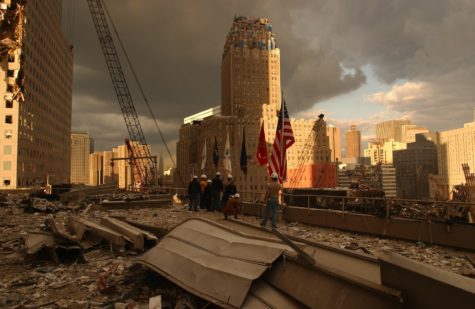NEW YORK — Sixteen years ago, the collapse of the World Trade Center left lower Manhattan blanketed in a cloud of toxic dust. In the wake of 9/11, children who were exposed to the chemicals and likely breathed in the fumes are showing early signs of heart disease risk, according to a new study.
The researchers at NYU Langone Health analyzed blood tests of 308 children, nearly half of whom may have come into direct contact with the dust and debris on 9/11. The children that participated in the study were enrolled in the World Trade Center Health Registry (WTCHR), which helps track the physical and mental health of nearly 2,900 children who were either living or attending school in Lower Manhattan on 9/11, through annual check-ups.

The children examined the study, who were mostly young adults now, were more likely to be exposed to the dust. Researchers found that children with higher blood levels of the chemicals present in the dust had increased levels of artery-hardening fats in their blood.
“Since 9/11, we have focused a lot of attention on the psychological and mental fallout from witnessing the tragedy, but only now are the potential physical consequences of being within the disaster zone itself becoming clear,” says Dr. Leonardo Trasande, the study’s lead investigator and health epidemiologist and associate professor at NYU School of Medicine, in a press release.
Dr. Trasande and his team determined the long-term danger may lie from exposure to certain perfluoroalkyl substances (PFASs), which are chemicals that polluted the air as electronics and furniture burned on the day of the attack. These chemicals also include perfluorooctanoic acid (PFOA), which were commonly used to make plastics more flexible. Manufacturers in the U.S. stopped using the chemical, however, in 2014, when it was revealed that it could cause dangerous health conditions, including brain damage.
In an analysis conducted by Dr. Trasande in January 2017, children from the WTCHR database showed high levels of life-threatening PFOA in their blood compared to the children who were not in Lower Manhattan on 9/11.
The study’s results showed that roughly every threefold increase in blood PFOA levels was tied to a 9% to 15% increase in blood fats, including LDL cholesterol and triglycerides. If these raised fat levels are left unchecked, they can lead to fatal consequences such as heart attack.
It is important to note that these risks can also be related to lifestyle factors like diet and exercise.
“Our study emphasizes the importance of monitoring the health consequences from 9/11 in children exposed to the dust,” says Trasande, “and offers hope that early intervention can alleviate some of the dangers to health posed by the disaster.”
The researchers tout the study for being the first to link long-term cardiovascular health risks in children from toxic chemical exposure on 9/11. Previous studies have found that 9/11 first responders were at higher risk to develop lung problems, respiratory symptoms, sinus problems or asthma.
The full study is published online in the journal Environment International.
